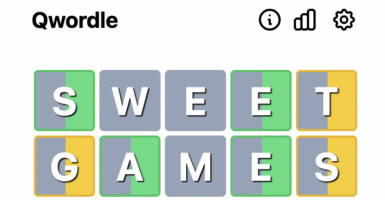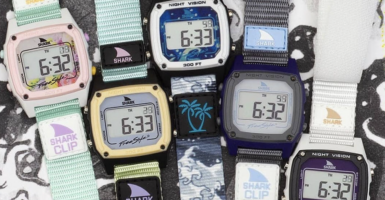Photos Of The Vietnam War Most Of Us Have Never Seen
The Vietnam War originated as a struggle for independence from French colonial rule but spiraled into a bloody conflict that would span many years as the United States became involved.
It was also noteworthy for the level of access granted to journalists and photographers, who were able to relay candid, often shocking, details to the rest of the world — a significant factor in the war’s unpopularity. Let’s look back at some of the remarkable photographs captured during the Vietnam War.
War correspondents had boots on the ground.

Groundbreaking journalists such as Australian war correspondent Kate Webb, seen above, helped document the Vietnam War from many angles.
Webb was so determined to cover the war that her work actually saw her captured by North Vietnamese troops and held captive for several weeks. She was believed to be dead — her obituary was even published — but survived her ordeal and was eventually released.
The U.S. became involved because of Domino Theory.

There are numerous factors that contributed to U.S. involvement in Vietnam, but chief among them was the Domino Theory: The idea that if one country fell to communism, then others would follow.
At first, involvement was limited to military advisors sent by President Dwight D. Eisenhower to aid their South Vietnamese counterparts. However, under the presidency of John F. Kennedy and later Lyndon B. Johnson, U.S. involvement escalated significantly.
It became a political boondoggle.

Senator Edward Kennedy can be seen here visiting a field hospital in South Vietnam. By this point in the conflict, U.S. forces were heavily involved in the fighting.
Stateside, support for U.S. involvement in the war started to wane, with many Americans seeing no point in sending U.S. citizens to die in a far-away conflict.
It coincided with a major social movement.

The hippie movement can’t be attributed to Vietnam protests, nor can Vietnam protests be attributed to hippies, but it’s safe to say that the political climate in the mid to late 1960s was changing rapidly.
Students, intellectuals, civil rights leaders, and veterans of prior conflicts criticized the war and the draft, which disproportionately affected the working class.
It wreaked havoc on the Vietnamese populace.

Vietnamese civilians were often left with little more than their belongings — and sometimes less — after battles that took place in their neighborhoods.
In some cases, such as the infamous My Lai Massacre, U.S. troops even targeted civilians. My Lai was initially covered up, but when it was finally exposed in 1969, it further fuelled anti-war sentiment.
The draft was unpopular.
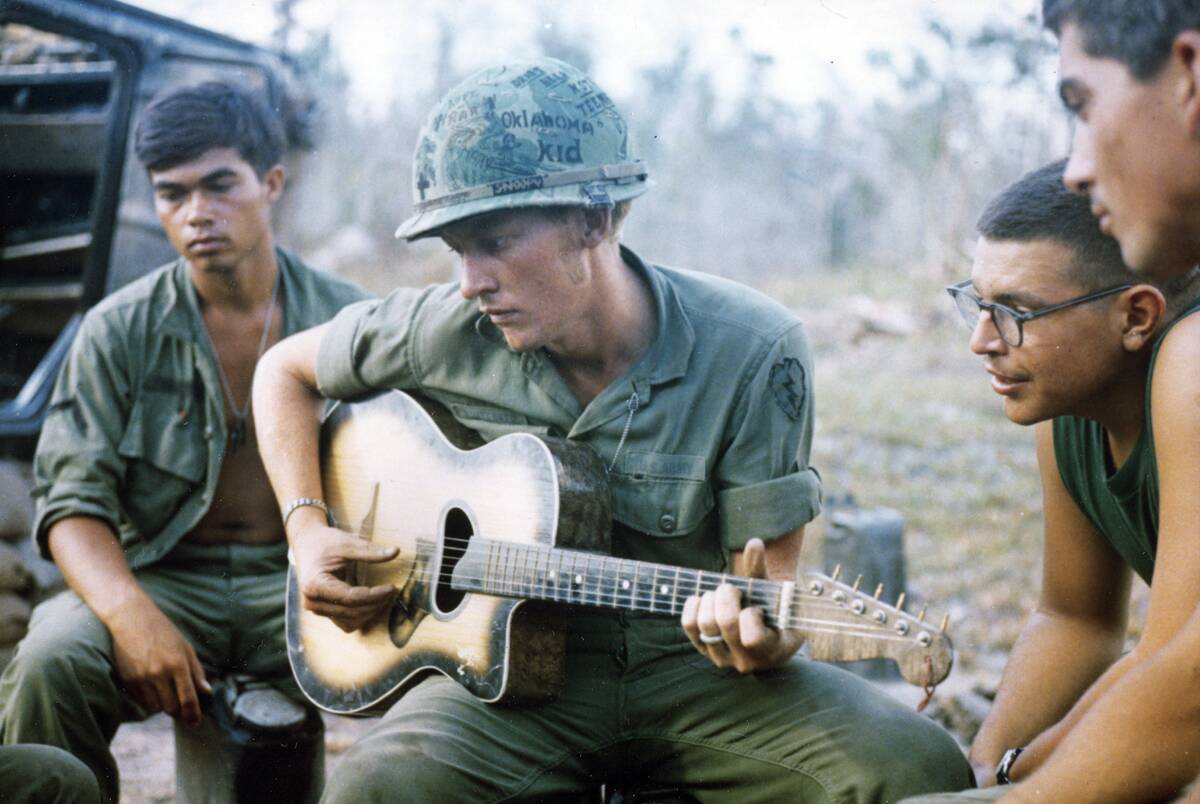
World War II, which had taken place scarcely 20 years earlier, also featured a draft. But military service in World War II was widely accepted by the U.S. public, whereas Vietnam was never particularly popular.
The draft lottery, introduced in 1969, attempted to make the system fairer, but the draft remained controversial. Americans protested by burning draft cards, seeking conscientious objector status, or even fleeing to Canada.
The war became increasingly unpopular.

The protest movement against the Vietnam War was so massive and so widespread that it helped to birth an entirely new form of counterculture, the hippie movement.
As the war dragged on, the rising number of American casualties, along with revelations of atrocities on Vietnam’s battlefields, led an ever-rising number of young Americans to gather in protest.
The Viet Cong was a constant threat.

Viet Cong guerillas were able to inflict heavy losses on U.S. troops, despite the balance of military might falling squarely on the U.S. side.
Because the Viet Cong was so familiar with their surroundings and were known to employ women and children, U.S. and South Vietnamese troops were vigilant. Here, South Vietnamese troops are seen arresting people believed to be working for the Viet Cong.
Purple haze was a literal thing.

Jimi Hendrix’s rousing, pulsing song “Purple Haze” became an anthem of the counterculture era, and as such is somewhat synonymous of the Vietnam War era.
While Hendrix himself gave varying explanations as to the origin of the song’s title, this 1968 photo from South Vietnam’s A Shau Valley shows that certain smoke grenades would emit a vibrant purple smoky haze.
Chemical warfare was utilized.
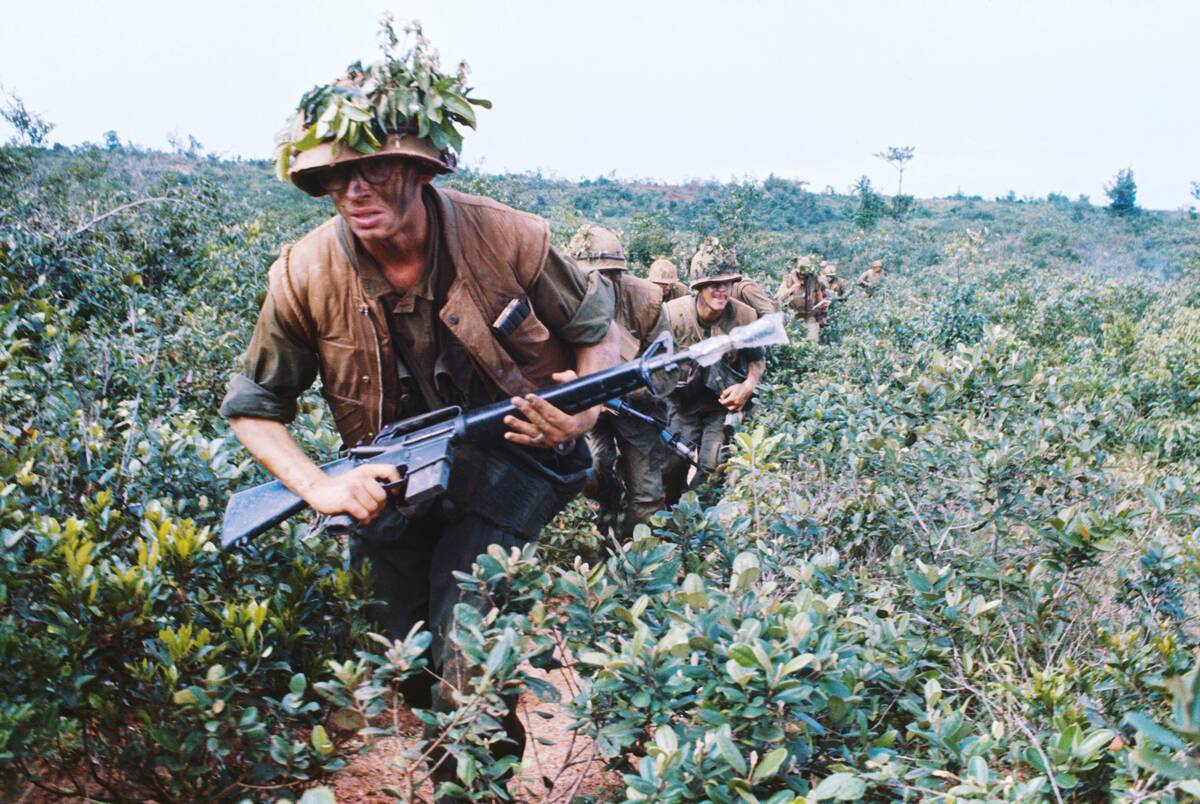
The advent of modern chemicals, including chemical defoliants like Agent Orange, meant that the U.S. had new options to face the enemy.
Between 1962 and 1971, millions of gallons of Agent Orange were sprayed over Vietnam, which led to devastating environmental and health consequences. Both Vietnamese civilians and American veterans suffered long-term health effects.
Many troops had to eat on the go.

While some service members had access to field kitchens, many of the troops serving in Vietnam had to eat rations during their missions.
Troops of the U.S. Army’s 1st Brigade infantry are shown here eating combat rations, or C-rations, which generally included a canned entree like meat, along with crackers, canned fruit, instant coffee, and a small dessert.
Other countries also played a role.

With the capitalist United States supporting South Vietnam, North Vietnam was in turn supported by communist allies in the Soviet Union and China.
The Soviets provided the North Vietnamese with weapons, aircraft and technical expertise, while China supplied manpower and logistical support. Tensions between China and Russia often meant that their aid was uncoordinated and out of sync.
Many Americans were captured.

This photo shows a group of American soldiers who are on the verge of being freed after several years of imprisonment at the hands of Viet Cong forces.
While these soldiers were able to return home, many weren’t. POWs endured malnutrition, inadequate medical care and inhumane treatment at Viet Cong prison camps. Many of these POWs are still considered missing in action today.
Richard Nixon introduced “Vietnamization.”

Vietnamization was, in effect, a strategy to gradually withdraw U.S. troops from the unpopular conflict while saving face.
The theory was set into motion, with U.S. troops decreasing and increased responsibility falling on South Vietnamese forces. However, this tilted the balance in favor of North Vietnam, and Nixon responded by expanding the war into Cambodia and Laos.
Tet became a flashpoint.

The Vietnamese Lunar New Year is known as Tet, and is generally a festive time. During the Vietnam War, it was expected that there would be a ceasefire during Tet — and as such, these civilians are availing themselves of an open-air market.
However, during Tet of 1968, a major coordinated attack was launched by North Vietnamese and Viet Cong forces, striking more than a hundred cities, towns, and military targets across South Vietnam, including the U.S. Embassy in Saigon.
The expansion of the conflict led to instability.
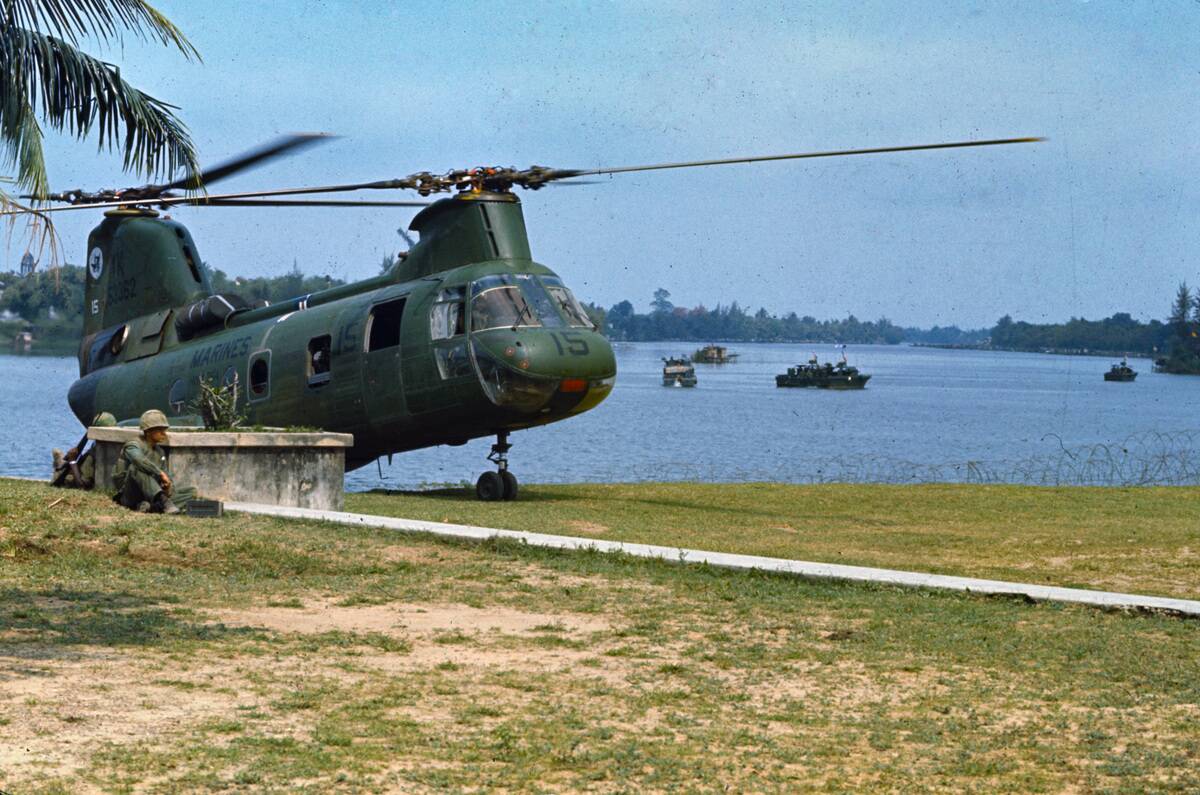
Nixon’s strategy of winding down hostilities in Vietnam while expanding them in Cambodia and Laos was an attempt to disrupt North Vietnamese supply lines, but it yielded mixed results.
The 1970 Cambodian Campaign failed to destroy Viet Cong bases and led to the rise of the Khmer Rouge, while efforts in Laos also failed to have much effect.
Jane Fonda became infamous.
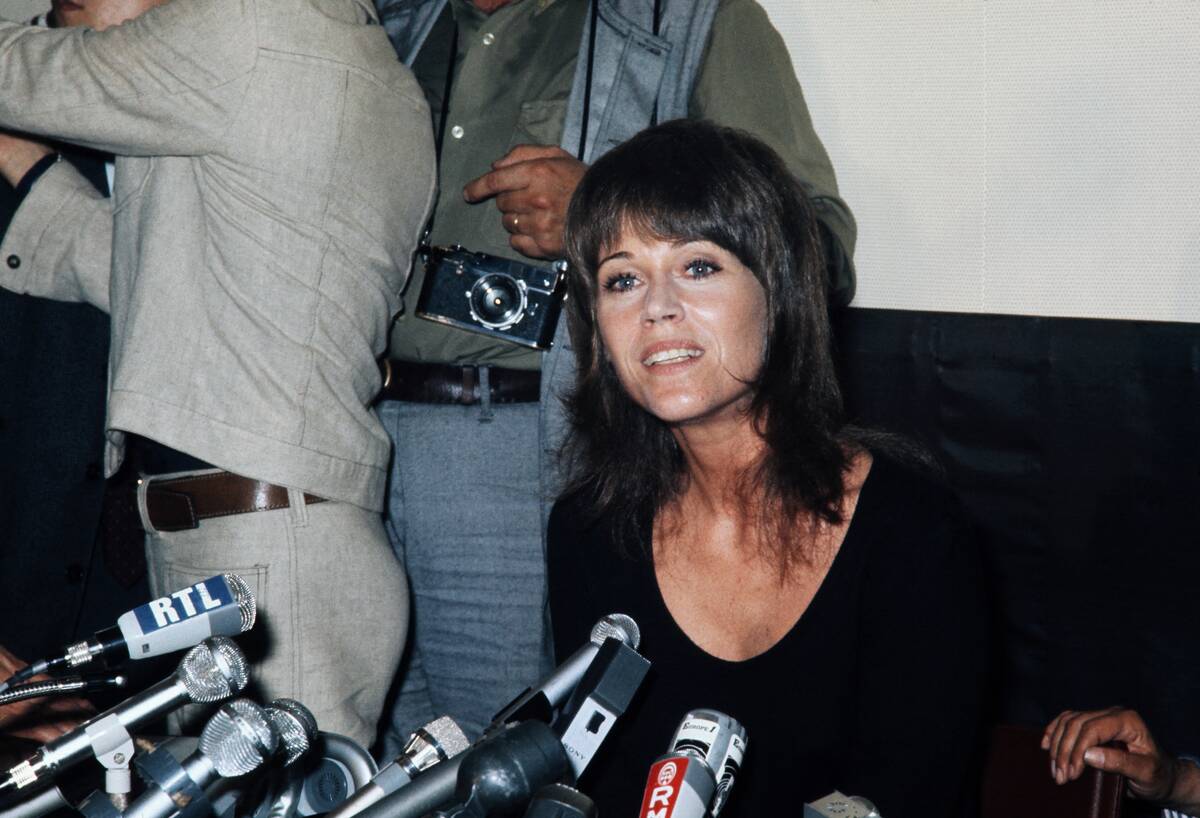
After a 1972 trip to North Vietnam, Jane Fonda returned to the United States to share her experiences. She voiced her support for the anti-war movement — a relatively non-controversial position — but waded into hot water after photographs surfaced showing her sitting next to a North Vietnamese anti-aircraft gun.
Fonda was seen by many as a traitor to the United States and earned the derisive nickname “Hanoi Jane.” While she’s expressed regret in the years since, her actions are polarizing to this day.
The U.S. government was deceptive.

It wasn’t until the once-classified Pentagon Papers were released in 1971 that ordinary Americans had a full scope of the conflict.
The explosive document revealed that multiple presidential administrations had misled the public about both the war’s public image and the degree of U.S. involvement. They also showed that policymakers privately believed the war was unwinnable, yet insisted otherwise in public.
Black markets flourished.

An influx of American troops also brought an influx of American goods, and the civilians of Saigon were only too happy to buy and sell these valuable supplies.
Black markets sprung up throughout the city, offering war-weary civilians a way to barter for much-needed goods outside of official channels.
The Paris Peace Accords were signed in 1973.

The Accords were signed in Paris in January of 1973 and officially ended direct U.S. military involvement in Vietnam while also mandating a ceasefire and the withdrawal of American troops.
Despite what appeared to be a promising agreement, the fragile peace soon collapsed and the ceasefire fell apart. Without U.S. support, South Vietnamese troops were overwhelmed by North Vietnamese advances.
Rain and flooding were constant challenges.

As depicted in Forrest Gump, soldiers on both sides of the Vietnam War endured rain and flooding, particularly during Vietnam’s wet and stormy monsoon season, which generally lasts from May to October.
The waterlogged conditions made movement difficult while raising the risk of medical issues like trench foot, infections, and leeches.
Saigon fell in 1975.

The final major flashpoint of the war was the Fall of Saigon on April 30, 1975. North Vietnamese troops captured Saigon, the capital of South Vietnam, which marked the end of the war.
Thousands of South Vietnamese citizens and American personnel were left in a desperate scramble to flee the fallen city.
Soldiers found a way to express themselves.
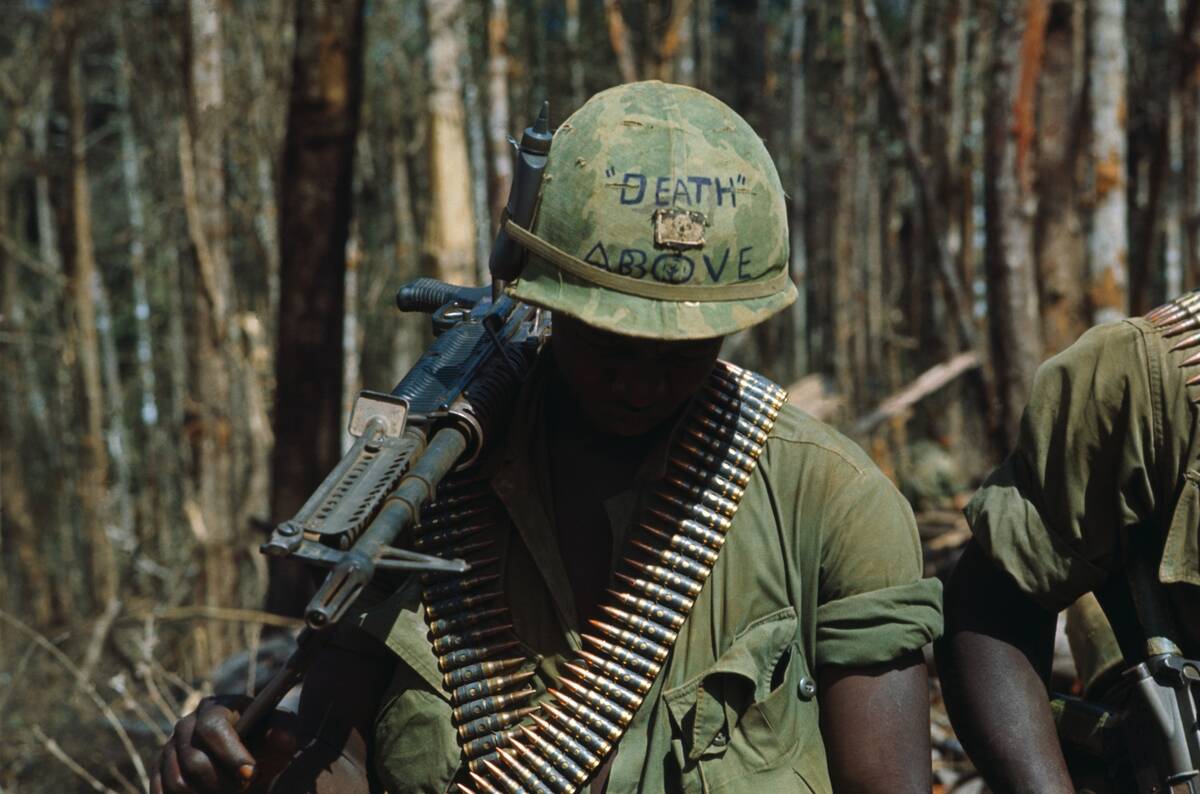
Soldiers in a conflict are generally seen as faceless parts of a larger unit, but the counterculture movement was strong enough to influence U.S. servicemen in Vietnam.
Soldiers frequently painted messages on their helmets, either as a way to voice opposition to what they saw as an unjust conflict or to send a message to the enemies that they intended to fight.
Life became even more difficult in South Vietnam.
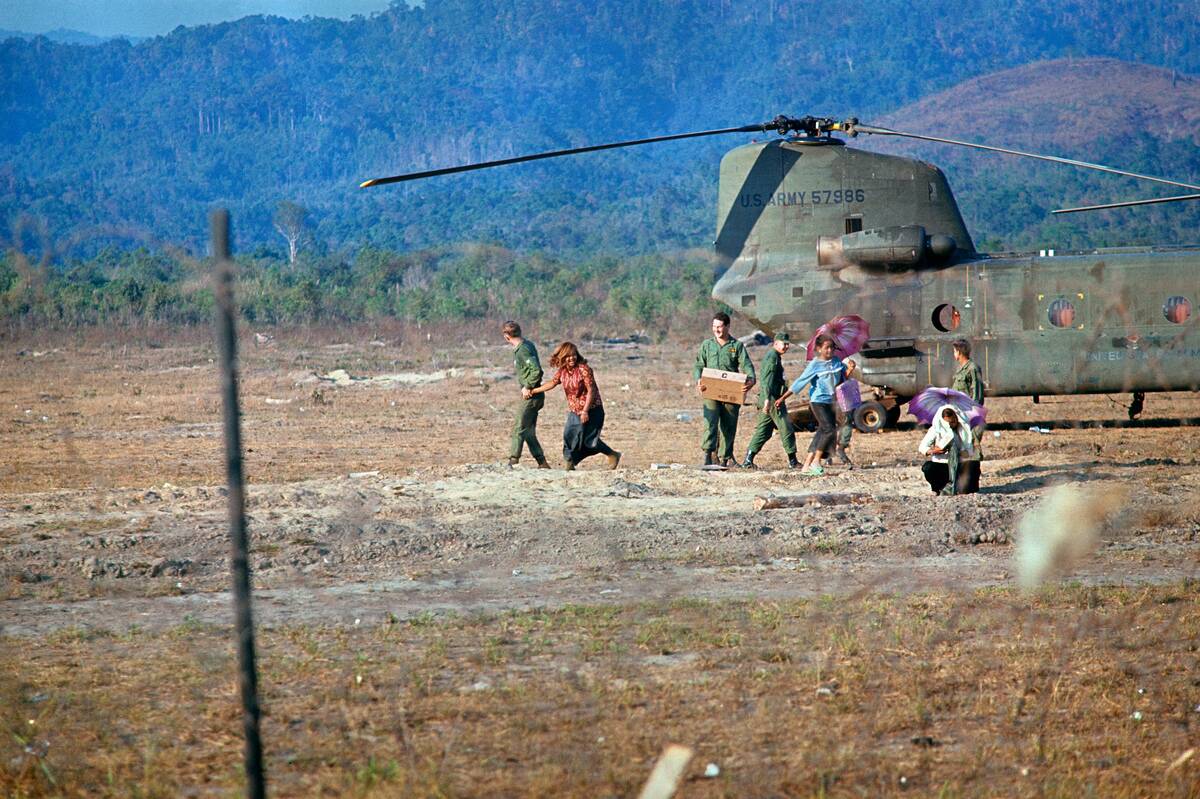
After the Fall of Saigon and full U.S. withdrawal, South Vietnamese citizens faced harsh retribution in many cases. Thousands were sent to re-education camps to endure forced labor and indoctrination.
Those with the means to do so fled the country entirely, often in overcrowded and dangerous boats. These “boat people” became a humanitarian issue for countries in the West.
Dan Rather made a name for himself.
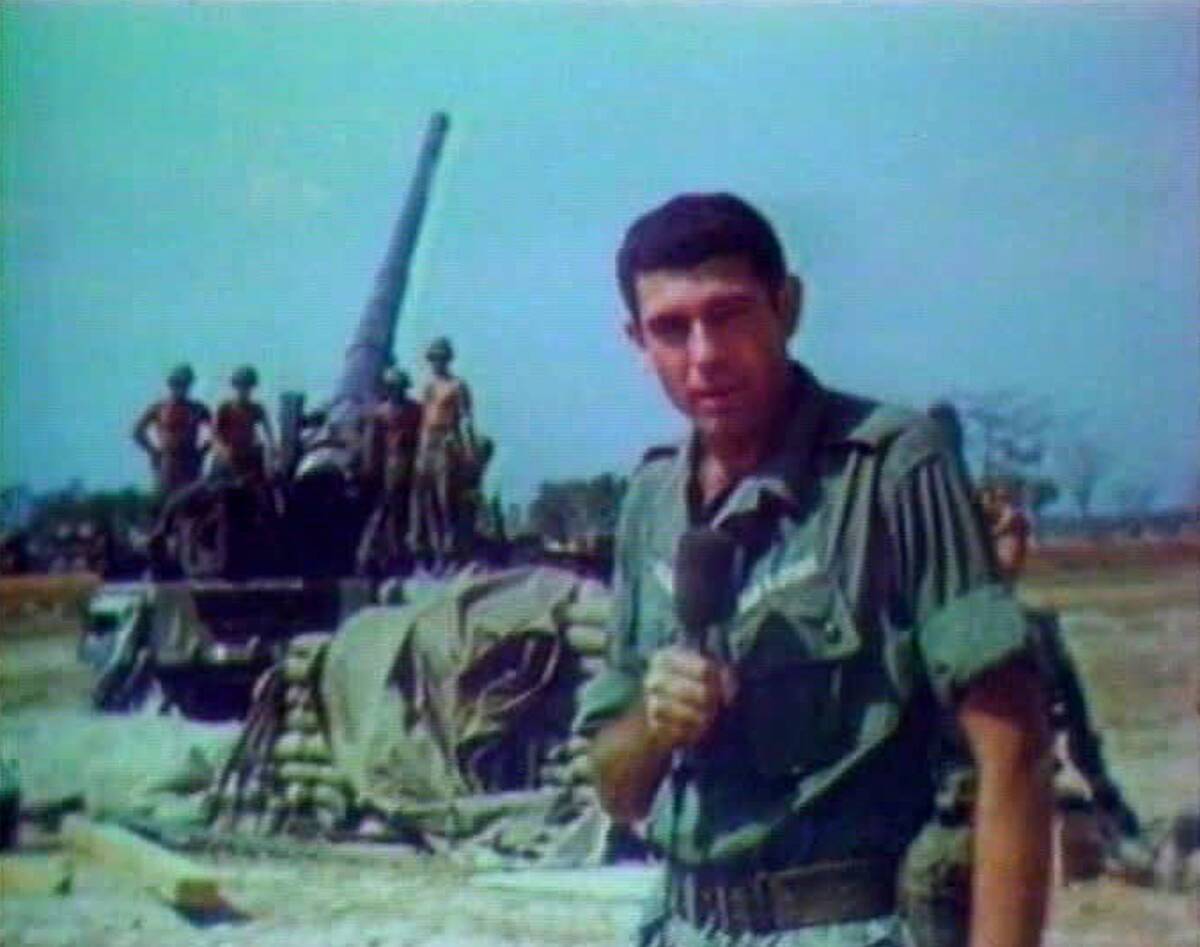
Dan Rather is known today as one of the most prominent American journalists of the 20th century, but he first became well-known to the American public for his on-the-ground reporting during the Vietnam War.
This image shows Rather reporting from the very front lines of the conflict. He later parlayed this experience into an anchor role with CBS.
U.S. veterans dealt with after-effects.

Many American veterans returned home from the conflict with post-traumatic stress disorder (PTSD), which had been referred to by different terms, including shell-shock, in prior wars.
In many cases, veterans received little recognition or support for fighting in an unpopular war. This in turn led to unemployment and substance abuse for those who weren’t able to reintegrate into society.
The reporting was raw.

Unlike earlier conflicts, where the American public digested battles through carefully curated newsreels, the media was present on the front lines of Vietnam.
This image of a CBS camera crew interviewing U.S. soldiers on Tay Ninh Road in 1967 shows just how immediate the reporting was. For many Americans, it was their first exposure to the brutal realities of warfare.
The war had a lingering impact on American politics.

An unpopular war meant unpopular presidents, and both Lyndon Johnson and Richard Nixon were widely seen as villains at best and war criminals at worst by a war-weary American public.
Congress passed the War Powers Act of 1973 as a response, which limited presidential authority in military conflicts, and the knock-on effects reshaped American foreign policy.
The Huey was a workhorse.
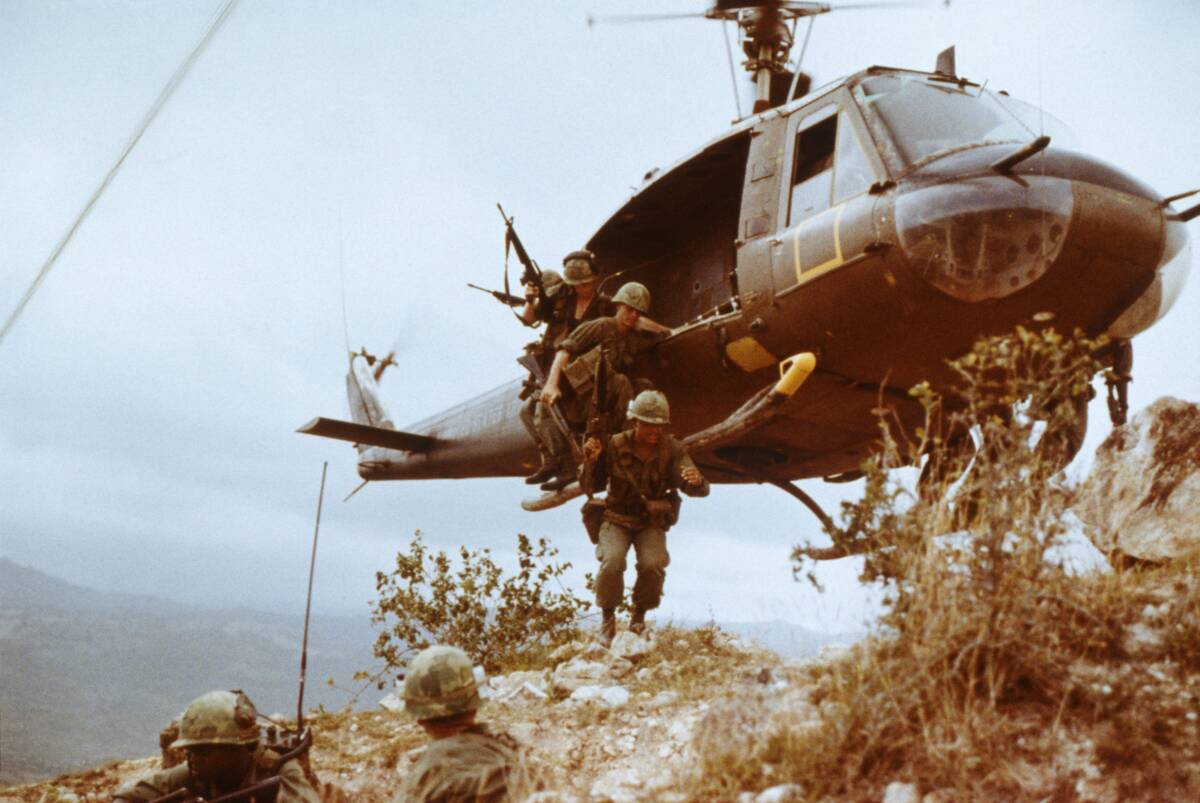
The Bell UH-1 Iroquois helicopter was originally designed for medical evacuation, transport, and utility missions, but the versatility of this quick helicopter quickly made it useful for a far wider variety of roles.
Nicknamed the “Huey,” the distinctive whop-whop sound of its rotors became immediately recognizable to anyone who spent time fighting in Vietnam.
Vietnam eventually reunified.

The long road to reunification included many hardships for citizens of both North and South Vietnam as they struggled to rebuild their war-torn home.
In the 1980s, economic reforms like Doi Moi helped Vietnam transition to a more market-oriented system. This spurred economic growth and helped the country recover.
Urban areas were devastated.

This image of Hue, South Vietnam in April of 1968 shows the carnage and rubble left in the wake of the Tet Offensive, which had occured ten weeks prior.
The surprise offensive used shock and awe tactics and shattered the illusion of dominance by the U.S. and South Vietnam. Back in the United States, it further soured enthusiasm for a war that was already deeply unpopular.
It marked a first for the United States.

The Vietnam War had once been seen as winnable for the United States, but this hope quickly collapsed — even as more and more U.S. forces poured into the country.
In the end, Vietnam was the first major conflict in which the U.S. failed to achieve its objectives. This was a major hit to both U.S. morale and the country’s standing on the world stage.
Rice paddies played a crucial role.

Much of rural Vietnam is filled with rice paddies, and these fields became a major part of the Vietnam War. They provided sustenance from rice, but their dense and often flooded terrain made them difficult for U.S. troops to traverse.
Because Viet Cong forces were more familiar with the landscape, this created a strategic advantage and a natural hiding place.
There hasn’t been a U.S. military draft since.

Because of the major societal impact of Vietnam, and the embarrassing way that it ended, U.S. policymakers adopted a different strategy moving forward.
While there have been U.S. military conflicts since Vietnam, they’ve been approached with greater caution as successive presidents have been reluctant to get into more prolonged conflicts. Vietnam also marked the last time to date that the United States has imposed a military draft on its citizens.
This photo became emblematic of the war.
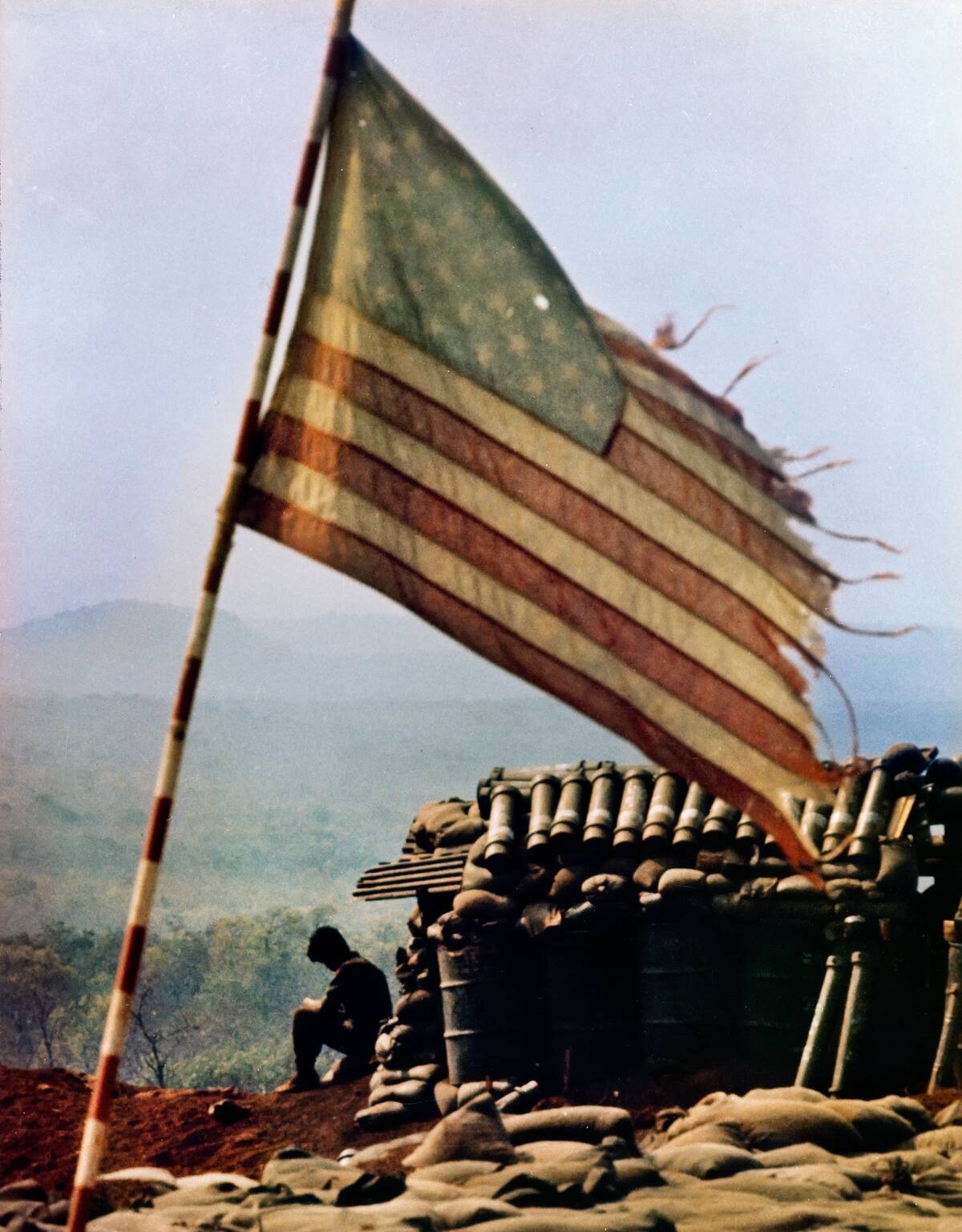
Journalists, photographers, and other media members were present throughout the Vietnam War, and photographs like this one became almost immediately iconic.
This tattered flag, with a bullet hole, was seen flying above firebase LZ Lonely. Photographer David Hume Kennedy snapped the stirring image, and was awarded the 1972 Pulitzer Prize for Feature Photography.

